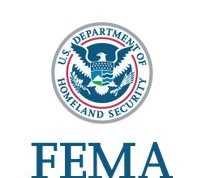ULI Announces Winners for 2025 Jack Kemp, Terwilliger Center Innovation Awards
WASHINGTON – RealEstateRama — The Urban Land Institute’s (ULI) Terwilliger Center for Housing announced two winners for this year’s Jack Kemp Excellence in Affordable and Workforce Housing Award and three winners for the Terwilliger Center Award for Innovation in Attainable Housing.
“ULI’s Terwilliger Center for Housing is excited to present the 2025 winners of the Kemp and Innovation awards,” said ULI Chief Impact Officer Aimee Witteman. “Each winner is showing the industry how to create more inclusive and affordable communities through housing production.”
The Kemp Award was established in 2008 in memory of Jack Kemp, a former secretary of the U.S. Department of Housing and Urban Development and a national advisory board member of the Terwilliger Center. It recognizes developments that use innovative financing sources to provide attainable mixed-income housing, primarily focusing on households earning between 60% and 120% of the area median income (AMI).
The Terwilliger Center created the Award for Innovation in 2022 to recognize unique yet replicable developments that offer or preserve deeper affordability.
This year’s winners for the Jack Kemp Excellence in Affordable and Workforce Housing award are:
The Wilder, Nashville, Tennessee — The Wilder transforms an underutilized motel into 97 units of permanent, mixed-income workforce housing in the urban core of Nashville. By reusing an existing motel building, the project delivers workforce housing faster and more cost-effectively than a typical ground-up apartment development. Those savings, combined with a creative financing and investment strategy, allow the project to serve households earning 60% to 100% of AMI without relying on public subsidies.
Market Street Village, San Diego, California — Market Street Village, a 229-unit property in downtown San Diego, exemplifies an innovative strategy for converting market-rate properties to affordable housing through a social impact equity fund that bypasses the low-income housing tax credit (LIHTC) process. The property designates half of its units for veterans exiting homelessness and the other half for individuals earning up to 80% of AMI. An on-site tenant wellness coordinator supplements services provided by Department of Veterans Affairs case managers to help tenants stay housed and build long-term stability.
This year’s winners for the Terwilliger Center Award for Innovation in Attainable Housing are:
Sendero Verde, East Harlem, New York — Sendero Verde serves more than 700 families with incomes ranging from formerly homeless to 110% of AMI, and is now the world’s largest Passive House residential building. Conceived as a “community of opportunity,” it combines high-efficiency, healthy housing with access to quality schools, health care, transit, jobs, and open space. The site includes a Family Enrichment Center and hosts organizations such as Harlem Children’s Zone and Union Settlement. A grant-funded program delivers robust case management and social services for formerly homeless residents.
The Aster, Salt Lake City, Utah — Located in the urban core of Salt Lake City, The Aster offers 190 mixed-income units, from studios to four-bedroom apartments, for both market-rate renters and those earning 20% to 80% of AMI. The two mixed-use buildings include 19,000 square feet of commercial space and use an innovative steel structural system to reduce construction costs. A paseo plaza between the buildings provides a welcoming public space lined with restaurants, a food hall, event space, offices, and live-work units.
The Kelsey Ayer Station, San Jose, California — The Kelsey Ayer Station includes 115 apartments for residents earning 20% to 80% of AMI, with 25% of units reserved for people with disabilities. Designed for cross-disability access and inclusive community living, the $75 million development features amenities such as a sensory garden, craft space, fitness room, dog run, and wellness terrace. On-site Inclusion Concierge staff offer personalized support, resource referrals, and relationship-building among residents.
Across the award winners, public policy played a decisive role in enabling ambitious, high-impact housing developments. Together, these examples show how layered local, state, federal, and mission-driven policies can accelerate timelines, reduce costs, and embed long-term affordability, while also advancing equity, sustainability, and inclusion in housing.
- In New York, Sendero Verde leveraged the SustaiNYC RFP, deep affordability requirements, and state energy incentives to deliver the world’s largest Passive House project with long-term affordability commitments
- In San Diego, Market Street Village combined California’s Welfare Property Tax Exemption, the Regional Task Force on Homelessness’ coordinated entry system, and mission-aligned debt platforms to transform a Class A acquisition into a rapid-response homelessness intervention.
- In Nashville, The Wilder was made possible through Metro Nashville’s Mixed-Income PILOT tax abatement, expedited permitting, and third-party plan review policies, which collectively unlocked an unconventional motel-to-housing adaptive reuse.
- In San José, The Kelsey Ayer Station relied on a layered stack of local funding with 55-year affordability covenants, California’s SB35 streamlined approvals, the state’s Transit-Oriented Development and Mixed-Income programs, and federal HUD Section 811 rental assistance to pioneer inclusive, disability-forward housing.
- Finally, in Salt Lake City, The Aster depended on the city’s redevelopment agency RFQ, federal LIHTC reforms (including the 4% “fix”), Utah’s new state housing tax credit, and gap financing tools like the Olene Walker Housing Loan Fund to transform a stalled downtown site into a mixed-use, mixed-income community.
“While each community faces unique economic and real estate circumstances, the affordability demand is universal,” said Ron Terwilliger, awards jury chair and founder of the ULI Terwilliger Center for Housing. “I am pleased to see how developers have been able to provide high-quality homes for moderate- and lower-income households. We hope the real estate community can learn from these winners.”
The jury for the two awards is chaired by Ron Terwilliger, founder of the ULI Terwilliger Center and chairman of Terwilliger Pappas Multifamily Partners.
Other jury members are:
- Bonita Broadnax, director of housing and operations, Jeremiah Project, Charleston, Tennessee;
- Payton Chung, managing partner, Westover Green, Washington;
- Jill Ferrari, co-founder and managing partner, Renovare Development, Ypsilanti, Michigan;
- Cari Jones, managing partner and director of design, Cline Design Associates, Raleigh, North Carolina;
- Dara Kovel, chief executive officer, Beacon Communities LLC, Boston;
- Sara Myerson, managing director, MSquared, Wellesley, Massachusetts;
- Blaise Rastello, vice president, Ulysses Development Group, Denver;
- Mark Richardson, chief technology officer, Rich Analytics, Toronto;
- Stacy Silber, attorney, Lerch, Early & Brewer Chartered, Bethesda, Maryland;
- Jaydan Tait, president and CEO, Attainable Homes Calgary, Calgary, Alberta; and
- Emily Thompson, partner, GMD Development LLC, Seattle.
For questions about the housing awards program, email ">. For more information, contact ">
.
The Urban Land Institute is a non-profit education and research institute supported by its members. Its mission is to shape the future of the built environment for transformative impact in communities worldwide. Established in 1936, the institute has more than 48,000 members worldwide representing all aspects of land use and development disciplines. For more information on ULI, please visit uli.org, or follow us on Facebook, LinkedIn, and Instagram.













